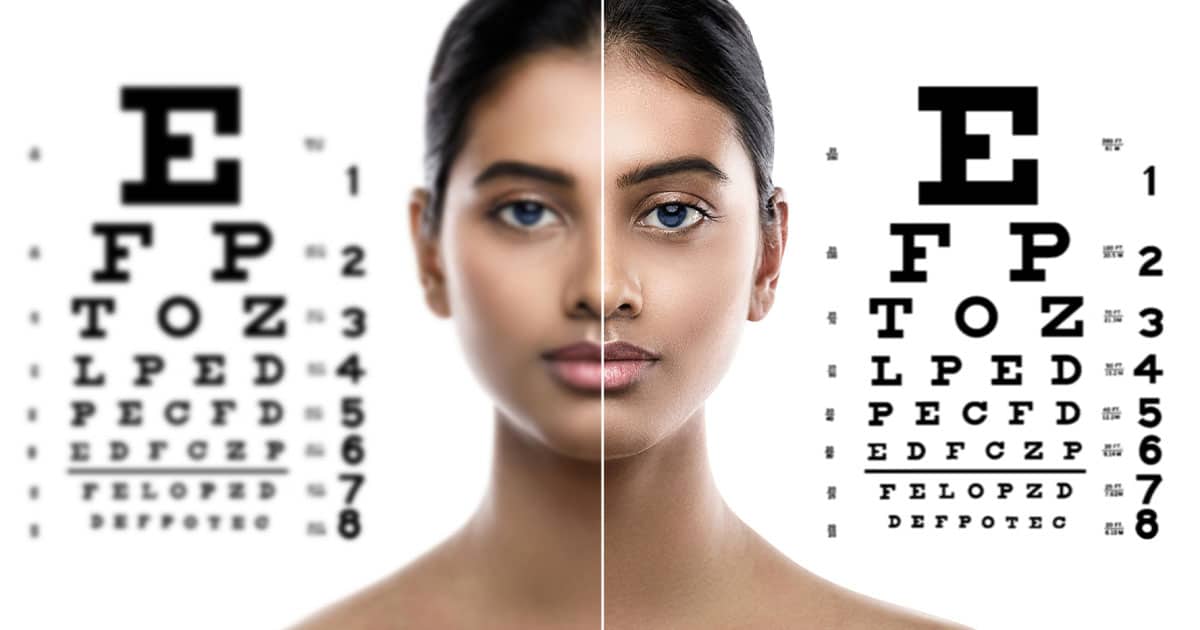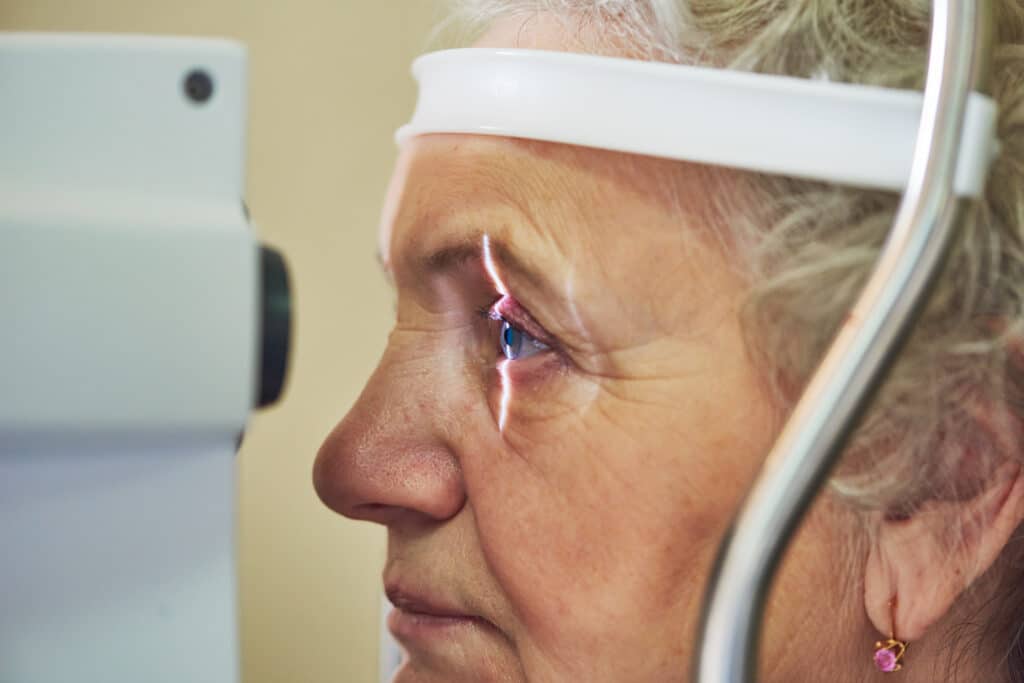Guide to Lens Replacement Surgery: Costs, Risks, and Process
April 8, 2021
What Is Lens Replacement Surgery?
Lens replacement surgery is an umbrella term for a few different procedures, most notably refractive lens exchange (RLE) and cataract surgery. Despite the different naming conventions, they are very similar in approach. During a lens replacement procedure, the eye’s natural lens is removed and replaced with an artificial intraocular lens (IOL) in order to reduce refractive error and improve focus. In doing so, the patient should have significantly reduced the need for glasses or no longer need them at all. Additionally, within this family of procedures are implantable artificial lenses that work with the eye’s natural lens called an intracameral lens (ICLs) or phakic intraocular lens, which also can achieve similar results. Here is a quick summary:

- Refractive Lens Exchange (RLE): Also referred to as clear lens exchange or clear lens surgery, refractive lens exchange entails the surgical removal of the natural lens and replaces it with an artificial intraocular lens inside of the eye. This permanent replacement is tailored to correct the patient’s refractive error and is intended to last a lifetime. Refractive lens exchange is generally utilized for people with presbyopia or high degrees of farsightedness. While it technically can provide vision correction for nearsightedness, it typically is not the preferred method when LASIK, PRK, or an intracameral lens, also called phakic intraocular lens are viable options. Some added bonuses to refractive lens exchange include the prevention of cataract development (since the new lens is artificial), as well as the natural feel since the new lens is implanted within the eye and not on the surface level like a contact lens and does not have the ongoing risks of contact lenses.
- Cataract Surgery: The lens replacement process for cataract surgery is nearly the same as refractive lens exchange. The primary difference is that with cataract surgery, the natural lens that is being replaced has developed a cloudy appearance as a result of cataracts. Another key difference comes with the type of IOL used as the lens replacement. Depending on the patient’s eye condition and needs, the eye surgeon will be able to recommend a suitable IOL. Among the options available are a monofocal lens (fixed focus IOLs), toric IOLs (fixed focus that corrects astigmatism), multifocal IOLs, or accommodating IOLs. An accommodating IOL is a version of the monofocal lens that allows the eye to focus at different distances simply by adjusting the position of the eye.
- Intracameral Lens (ICL) or phakic IOL: While not a lens replacement, intracameral lenses also offer a permanent vision correction by way of an artificial lens implant. With this method, the natural lens stays in place and the lens is inserted to rest in the space between the iris and the lens. A key benefit to this approach is that it is completely reversible should the eye experience vision changes in the future. This also allows the eye to retain the natural accommodation (ability to focus from far to near distance). Eyes that have undergone this procedure will continue to age naturally and will not be protected from eventually developing cataracts. If the eye develops a cataract after the implantation of an ICL, the ICL would be removed, followed by the cataract removal followed by an IOL implantation.
Does Lens Replacement Surgery Improve Vision?
Yes. In most instances, lens replacement surgery effectively improves vision with patients and helps them meet the driving standard of vision or better. The degree of which the vision is improved is dependent on a number of variables, including the patient’s pre-surgery eye health and prescription as well as the surgeon performing the operation. Perhaps the most notable variable that affects vision after the surgery is the type of intraocular lens used during the procedure.
For instance, if monofocal IOLs are used, it is possible that the patient will need the assistance of reading glasses for near vision tasks such as working at a computer or viewing small print. Alternatively, multifocal and accommodating IOLs should provide patients with the ability to see clearly at varying distances – which in most cases gets rid of the need for glasses or contact lenses.
Some patients with presbyopia may opt for monovision (also referred to as blended vision) during their lens replacement surgery, resulting in one eye excelling with viewing objects up close and the other for distance vision to help avoid the use of bifocals. Implantable contact lenses have proven to be effective for vision correction for those who have significant myopia or other conditions that may make them less suitable for a lens replacement surgery.
For each individual patient, the eye surgeon will work to find the most applicable and convenient IOL or ICL application to effectively meet the patient’s visual needs while aligning with their lifestyle.
The Path to Clearer Vision Starts Here
Is Intraocular Lens Surgery Painful?
No. Lens replacement surgery is a painless and safe procedure. Prior to the surgery, the patient will receive local anaesthetic to remove all pain sensations during the operation. As the anaesthetic wears off, patients commonly experience some temporary discomfort. In the days following a lens replacement surgery, it is common for the patient to experience mild soreness or itching around the eye but this typically subsides quickly. Generally, over-the-counter medicines for pain relief are fully sufficient to manage any discomfort the patient may be experiencing.
How Long Does It Take to Recover From Lens Replacement Surgery?
The recovery process after lens replacement or intracameral lens surgery is different from patient to patient but should lead to the same end result of having clear vision and more freedom from vision problems. Initial recovery from refractive lens exchange typically takes about a week. At this point, the patient should be able to resume most of their day-to-day activities. It should be noted that when both eyes need eye surgery, the surgeries are often done separately, usually about one to 2 weeks apart.
Immediately following the eye surgery, most patients will immediately notice that they have better vision than before the operation occurred. However, they will still have dilated pupils which will result in some amount of blurred vision. As the pupil returns back to its normal size, there should be a noticeable improvement in vision. After 24 hours the patient should experience the visual acuity gained from the procedure and be able to see clearly at a distance. Reading vision usually takes longer to improve, however it should sharpen within three to five days with a multifocal IOL or assistance from reading glasses if a monofocal IOL was used.
When about a week has passed after the eye surgery, the patient should return to the eye surgeon for a follow-up appointment. The eye will be assessed to determine if its healing is progressing normally and to verify that the vision correction was acceptable. If everything appears to be on track, a final one-month visit will be scheduled to make sure that vision has stabilized and that their prescribed eye-drop treatment has run its course. This process will occur on the same timeline for the patient’s other eye if they are being operated on at separate times.

How Much Does Lens Replacement Surgery Cost?
The cost of a lens replacement surgery is largely dependent on the type of surgery, as refractive lens exchange, cataract surgery, and implantable contact lenses may all have slightly different costs. Other variables may include the geographic region, surgeon, and specific needs of any given patient.
- Refractive Lens Exchange Cost: With RLE, the lenses themselves are often customized to the specific needs of a patient, adding a notable expense to the procedure. The cost for RLE can range anywhere from $2,500 to $4,500 per eye. In 2019, the average cost of RLE with a standard monofocal implant was $3,783 per eye (according to a large survey of U.S. cataract and refractive surgeons). That number can increase for patients with astigmatism or farsightedness as the corrective lenses have more complexity. RLE is usually considered to be an elective procedure, so insurance generally does not cover any portion of the cost.
- Cataract Surgery Cost: Cataract surgery done by hand (without a laser) which utilizes a basic intra-ocular lens is generally covered by insurance. A premium lens providing a greater range of focus and reducing the need for glasses is typically an out-of-pocket expense. However, it should be noted that the surgery expense itself should still be covered by medical insurance. Depending on the premium lens a patient decides on, the cost of this surgery can range between $3,500 and $5,500 per eye.
- Implantable Contact Lens Cost: ICL can cost around $4,000 per eye. Because this is an elective procedure, it is unlikely that your insurance company will contribute to this expense.
In instances that insurance does not cover the selected treatment option, many clinics may provide financing options for patients to help make the costs more manageable and attainable.
What Risks Are Associated With Lens Replacement Surgery?
Lens replacement surgery and intracameral lens surgery have been proven to be safe and effective options for vision correction. However, it is slightly more invasive than cornea-based laser vision correction surgeries such as LASIK or SMILE, and with any surgery, there are some inherent risks to consider. Still, the majority of risks associated with intraocular lens surgery can be addressed with additional treatments or medication in the rare instances that they occur. Some risks that are associated with lens replacement procedures include:
- Increased eye pressure
- Halos, blurry vision, or halos, typically when multifocal IOLs are utilized
- Dislocated IOLs
- Droopy eyelid
- Infection or bleeding within the eye
- Retinal detachment, primarily with patients who have a high degree of myopia
- Red, irritable, itchy, or sore eyes
- Vision that does not meet expectations, or residual astigmatism following the procedure
- Sensitivity to light
While it is good to be aware of these potential risks, serious complications are very rare. However, it is important that clinics and surgeons are thoroughly researched before committing to any surgery to ensure the safest treatment possible.
Conclusion
If you are considering refractive surgery of any kind, it is important that you meet with a reputable ophthalmologist or eye surgeon to discuss your vision problems and vision goals. By assessing your unique situation, including the properties of your eye and vision problems that need to be corrected, a professional recommendation can be made for appropriate treatment. Thankfully, there are many solutions to correct visual deficits and other issues with your eyes.
If you are in the Austin area and are considering lens replacement surgery or another treatment for your vision, please set up a free consultation with us at Heart of Texas Eye Institute.


